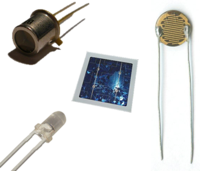
Photo from wikipedia
Environmental chemical contaminants in food seriously impact human health and food safety. Successful detection methods can effectively monitor the potential risk of emerging chemical contaminants. Among them, molecularly imprinted polymers… Click to show full abstract
Environmental chemical contaminants in food seriously impact human health and food safety. Successful detection methods can effectively monitor the potential risk of emerging chemical contaminants. Among them, molecularly imprinted polymers (MIPs) based on electrochemical biomimetic sensors overcome many drawbacks of conventional detection methods and offer opportunities to detect contaminants with simple equipment in an efficient, sensitive, and low-cost manner. We searched eligible papers through the Web of Science (2000–2022) and PubMed databases. Then, we introduced the sensing mechanism of MIPs, outlined the sample preparation methods, and summarized the MIP characterization and performance. The classification of electrochemistry, as well as its advantages and disadvantages, are also discussed. Furthermore, the representative application of MIP-based electrochemical biomimetic sensors for detecting small molecular chemical contaminants, such as antibiotics, pesticides, toxins, food additives, illegal additions, organic pollutants, and heavy metal ions in food, is demonstrated. Finally, the conclusions and future perspectives are summarized and discussed.
Journal Title: Polymers
Year Published: 2022
Link to full text (if available)
Share on Social Media: Sign Up to like & get
recommendations!